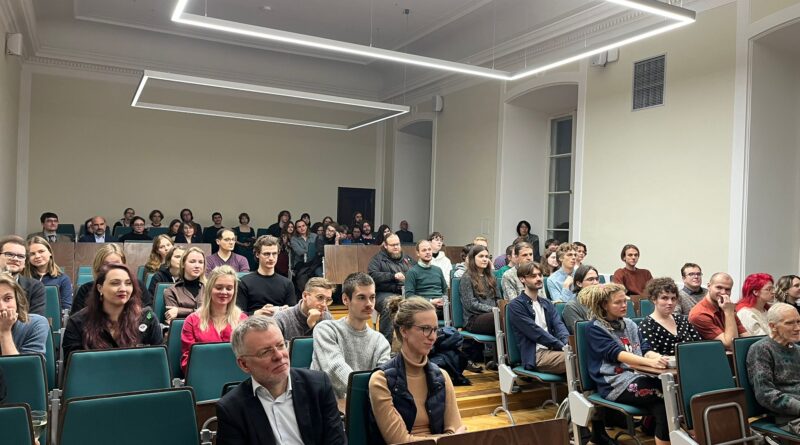Wykład prof. Geoffreya Ashtona (21.05.2025)
Prof. Geoffrey Ashton z University of San Francisco, wybitny specjalista od filozofii indyjskiej, wygłosi 21 maja o 13.15 na Wydziale Filozofii UW wykład pt. „Signs of Intelligent Life in Indian Philosophy of Nature: A Biosemiotics Interpretation of What the Consciousness (Puruṣa) Doctrine Adds to Sāṃkhya’s Concept of Nature”. Zapraszamy wszystkich zainteresowanych do sali 209 na Wydziale Filozofii UW (Krakowskie Przedmieście 3).
Organizatorem wydarzenia jest Centrum Badań Porównawczych nad Filozofią Wschodu i Zachodu działające przy Wydziale Filozofii UW we współpracy z Katedrą Azji Południowej Wydziału Orientalistycznego UW. Oto zaś abstrakt wykładu prof. Ashtona pt. „Signs of Intelligent Life in Indian Philosophy of Nature: A Biosemiotics Interpretation of What the Consciousness (Puruṣa) Doctrine Adds to Sāṃkhya’s Concept of Nature”.
Sāṃkhya, quite possibly India’s oldest philosophy, may have originally been a philosophy of nature (prakṛti, lit., “procreativity”) that preceded the arrival of the Indo-Aryans around 2,000 BCE. As such, it may have been associated with pre-Vedic ideas, practices, and spiritual goals: for example, this indigenous Sāṃkhya may have been more concerned with a fertility goddess than pursuing liberating knowledge of a pure, nonintentional, conscious selfhood (puruṣa) that transcends time, space, and causal relations. Nevertheless, the puruṣa doctrine became central to Sāṃkhya texts and traditions. The most authoritative Sāṃkhya articulation is found in the 4th century text, the Sāṃkhya Kārikā, which asserts a fundamental dualism between two principles: nature (prakṛti) and consciousness (puruṣa). The historical questions of when, how, and why the puruṣa doctrine became integral to Sāṃkhya are open to debate. I bring attention to them in order to frame a philosophical inquiry: what does a sophisticated theory of consciousness, such as we find in the Sāṃkhya Karika, contribute to a philosophy of nature? In exploring this question, I begin by foregrounding the lingering influence of Cartesianism in our readings of Sāṃkhya. Scholars have frequently imputed Cartesian-based views about nature (res extensa), consciousness (res cogitans), and the dual relation between the two in their interpretations of prakṛti, puruṣa, and their interrelation. In order to move beyond, this talk makes three basic moves: (1) it posits nature as living nature, (2) it distinguishes between sentience and consciousness, and (3) it explores the link between living nature and sentience from the perspective of biosemiotics. Biosemiotics rests on the premise that biological life and sign-activity are co-extensive. This might help to open new horizons of inquiry into Sāṃkhya—horizons obscured by Indologists’ Cartesian biases. Above all, a biosemiotics approach might offer clues to why Sāṃkhya philosophers understood the question of consciousness to be so integral to a philosophy of nature.


